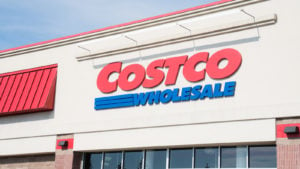Costco Wholesale Corp (NASDAQ:COST) has started rising off of its trough price of $477.32 which it hit on Jan. 25. Since then COST stock has been on a run and is likely to soon turn positive for the year.

As of Feb. 28, the stock is up to $511.92, which was up 0.73% in the last five days alone. This still leaves it negative year-to-date (YTD) as the stock ended last year at $567.70 on Dec. 31. This was actually a peak price for the year 2021.
Moreover, it seems highly likely that COST stock will likely pass this peak fairly soon. One major reason is that the company has been posting stellar monthly sales increases.
Where Things Stand With Costco
For example, since the company’s last quarter ended on Nov. 21, Costco announced that December sales (ending Jan. 2) rose 16.7% year-over-year (YoY).
In addition, its January sales (ended Jan. 30) showed an increase of 15.5% YoY. Therefore assuming its February sales also show similar gains, it’s highly likely that the company’s fiscal Q2 sales ending February will show a 16% gain or so YoY.
Certainly, that is what the market is thinking right now and likely why COST stock has been rising. It is possible that Costco will announce its February sales sometime during the first week of March. So this could also act as a catalyst for the stock in the near term.
Last quarter (ending Nov. 21) Costco reported that revenue was up 15% on a total company basis year-over-year (YOY). This included online sales that were up 14.3%.
In the past two months, online sales have been up 17.8% and 9% respectively. So this is another source of strong growth for the company. Analysts will be looking to see if the company posts strong quarterly online sales compared to the last quarter.
Moreover, analysts expect earnings per share (EPS) to hit $2.78, up 29.9% (GAAP basis) over the $2.14 last year, according to Seeking Alpha.
In addition, this would be lower than the $2.98 from last quarter ending Nov. 21. That would be a negative event for COST stock though. This is because the February quarter earnings include the high Christmas sales period (at least one month of it), as did the prior quarter. So earnings should be at least equal or no more than slightly lower.
Free Cash Flow Surges
However, Costco is producing large amounts of free cash flow (FCF). Last quarter it generated $3.26 billion in operating cash flow. Then, after deducting $1.06 billion in capital expenditures (capex), its FCF for the quarter was $2.2 billion. This is based on its quarterly 10-Q filing with the SEC (page 7).
This represented 4.4% of its quarterly $50.36 billion in sales. That is good since the FCF margin is a positive number.
But on the other hand, 4.4% is not that high of an FCF margin. Compared to technology stocks, which typically can make FCF 10% to 20% FCF margins, this is puny. However, for retail comps, this is a good FCF margin.
Nevertheless, based on the company’s surging sales this quarter, the company clearly has the ability to raise its FCF margins, as well as profits.
What To Do
The investors in COST stock can take comfort in the fact that Costco pays a nice quarterly dividend of 79 cents per share. Moreover, this is the last of four consecutive dividends paid at that rate, so analysts expect Costco could raise the dividend going forward.
Therefore assuming it raises the dividend by 0.09 cents (the same as a year ago) it will rise to 88 cents or $3.52 per share. Therefore, its forward-looking dividend yield is equal to 0.68%, just below 1%.
The point is that investors are getting paid to wait for its value to come forth. In fact, in 2020 Costco paid out a special one-time $10 dividend to shareholders. There is no way to predict when the company will do that again, but it’s always possible.
Analysts now have an average price target of $557.46 per share, based on a survey of 35 analysts by Seeking Alpha. That represents a potential upside of just 7.7% and is not even above where the stock closed last year ($567.7o).
However, the same analysis shows that the average price target has been rising over the past year. I suspect that if the company produces stellar fiscal results during the first week of March, analysts will raise their target prices again.
On the date of publication, Mark Hake did not hold (either directly or indirectly) any positions in the securities mentioned in this article. The opinions expressed in this article are those of the writer, subject to the InvestorPlace.com Publishing Guidelines.
Mark Hake writes about personal finance at mrhake.medium.com and Newsbreak.com and runs the Total Yield Value Guide which you can review here.
